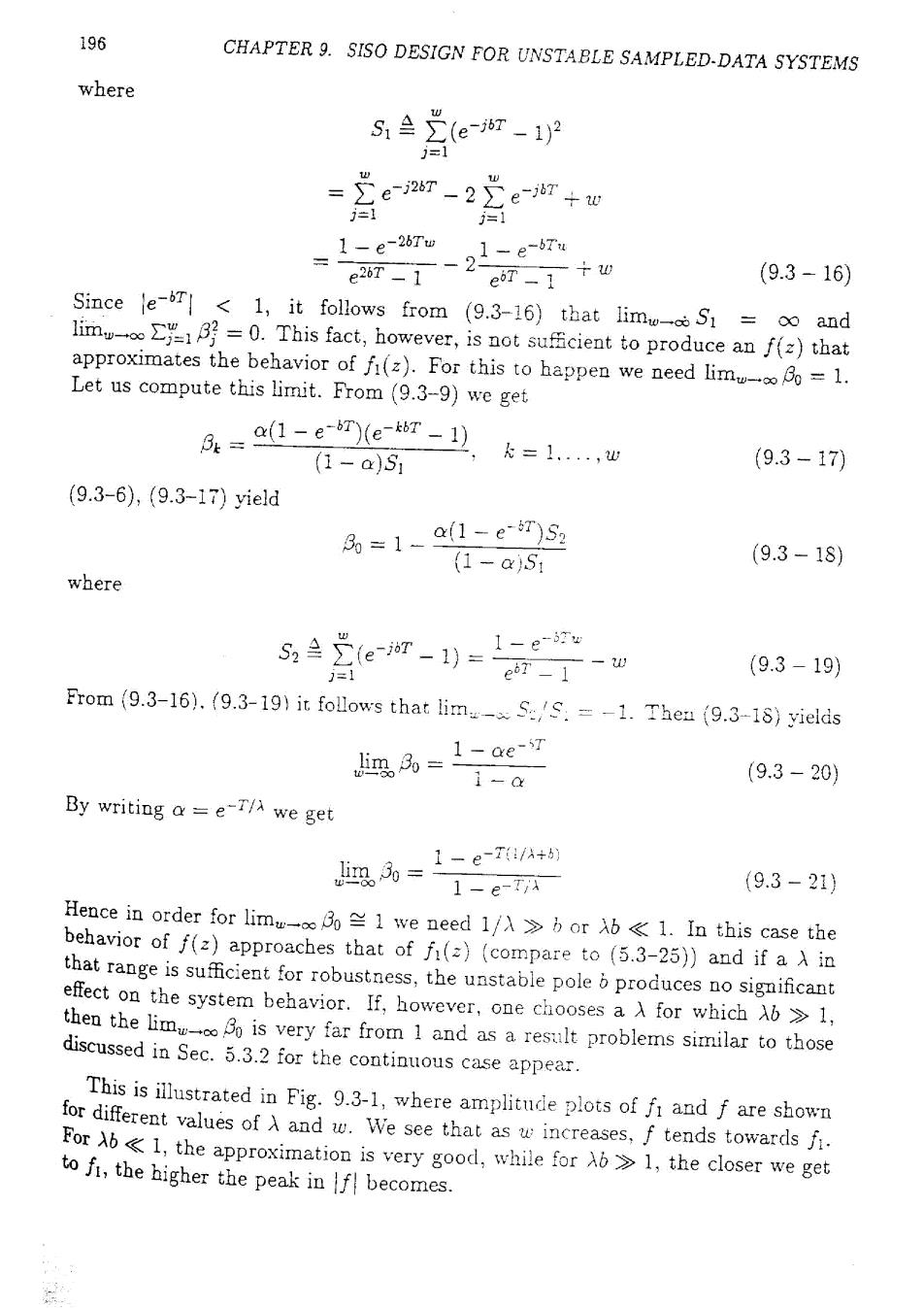正在加载图片...

196 CHAPTER 9.SISO DESIGN FOR UNSTABLE SAMPLED-DATA SYSTEMS where 5∑(e7-1)2 J=i se-2&好-2e-6T+w 1=1 1-e-267w 1-e-Tu (9.3-16) Since e-T<1,it follows from (9.3-16)that limw-S oo and lim=0.This fact,however,is not sufficient to produce an f()that approximates the behavior of fi(z).For this to happen we need limo=1. Let us compute this limit.From(9.3-9)we get .=a1-e(et7-1 (1-a)S1 ,k=1w (9.3-17) (9.3-6),(9.3-17)yield 8=1- a(1-e-T)52 (1-a)S1 (9.3-18) where S2兰(eir-1)=e、m =1 (9.3-19) From (9.3-16).(9.3-19)it follows that limS./S.=-1.Then (9.3-18)yields 玛= 1-ae-ST 1- (9.3-20) By writing a=e-T/A we get 照=。源 1-e-T/A+ (9.3-21) Hence in order for lim we need 1/o1.In this case the behavior of f(z)approaches that of fi(=)(compare to (5.3-25))and if a in that range is sufficient for robustness,the unstable pole b produces no significant effect on the system behavior.If,however,one chooses a for which b1, then the li is very far from 1 and as a result problems similar to those discussed in Sec.5.3.2 for the continuous case appear. This is illustrated in Fig.9.3-1,where amplitude plots of f and f are shown for different values of and w.We see that as w increases,f tends towardsfi. For,the approximation is very good,while for1,the closer we get to fi,the higher the peak infbecomes